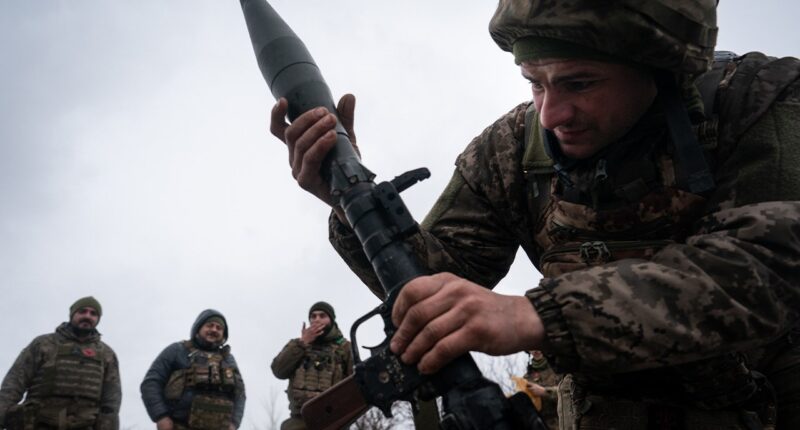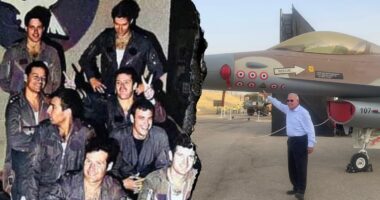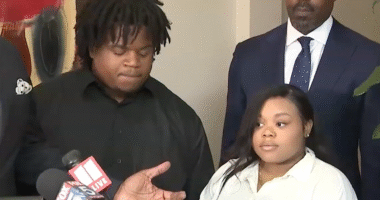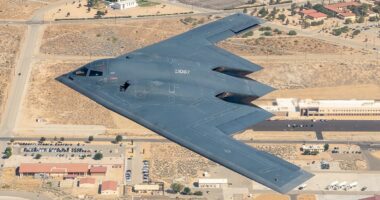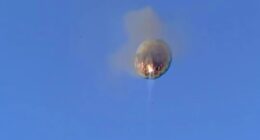As the third year of conflict in Ukraine draws to a close and with the approaching new year, fresh conflict lines have been drawn as Russia makes progress in the east while Kyiv initiates a new battleground, this time within Russia itself.
This ongoing conflict, which has not only impacted Europe and the United States but also resonated in the Middle East, has incurred significant costs, with a staggering $278 billion allocated in aid for Ukraine, including an allocation of almost $87 billion from Washington. Additionally, in 2024, this strife expanded to Asia as the power struggles in the Indo-Pacific region unfolded indirectly through the Ukrainian conflict.
SETTING THE TONE
At the start of 2024, a contentious debate erupted in the U.S. Congress regarding the provision of further military assistance to Ukraine. This discord underscored significant rifts within the Republican Party and shed light on Kyiv’s heavy dependence on military backing from Washington.

Ukrainian soldiers are shown during a training exercise on Dec. 15, 2024. (Wolfgang Schwan/Anadolu via Getty Images)
The monthslong debate, which finally ended in April, had major implications for Ukraine when it came to its ability to defend against Moscow’s missiles and its ability to counter Russian offenses. In 2023, Russia was unable to make any major advances despite the sheer number of men the Kremlin has long been able to throw into its war machine.
But 2024 politics in the U.S. changed the reality of war for Ukraine.
By early August, Ukraine made international headlines when it launched a surprise ground incursion into Russia’s Kursk region. It was an apparent attempt to divert forces from eastern Ukraine to the Kremlin’s home turf and give it a bargaining chip when the time comes for peace negotiations.
The campaign was the largest attack on Russia since World War II, and by mid-October the Pentagon had confirmed that North Korea had deployed troops to Russia, with some 11,000 North Korean soldiers believed to be fighting Ukraine in Kursk, the first foreign nation to send in troops since the war began.
Though North Korea is not the only nation to aid Russia in its invasion, Iran has for years been sending Shahed drones. In September, the U.S. accused Iran of supplying Russia with short-range ballistic missiles.
Ukraine is estimated to have lost 40% of the land it initially seized in Russia, according to reports last month. But North Korea is also reported to have endured heavy losses, with Zelenskyy claiming this week that 3,000 North Korean troops had been killed in the fighting while others face extreme logistical shortages, including access to clean water, the Associated Press reported.

A Ukrainian tank crew takes a break in the Sumy region near the border with Russia on Aug. 12, 2024. (ROMAN PILIPEY/AFP via Getty Images)
China has also been accused of aiding Russia by covertly sending it military support in the form of microelectronics and semiconductors, among other items.
YEAR END
North Korea’s direct involvement in Russia’s war has further highlighted the divisions in the Indo-Pacific that have arisen in recent years, not only in the face of Chinese aggression, but Pyongyang’s, which is a dynamic that has become caught up in the largest war Europe has seen since World War II as Japan and South Korea increasingly back Western allies and view the Russia-North Korea alliance as a threat.
North Korea’s deployment of troops to Russia reportedly prompted South Korea to consider escalating its non-lethal aid by mulling over a supply of missiles. Japan on Christmas Day sent Ukraine $3 billion in frozen Russian assets, adding to the $12 billion Tokyo has provided to Kyiv. In addition, Japan also pledged to support Ukraine’s energy sector, which Russia routinely targets.
Russia once again solidified its primary winter strategy by attacking Ukraine’s energy infrastructure on Christmas Day by firing 184 drones and missiles across the country, according to Ukraine’s air force. The attacks sparked mass blackouts amid freezing temperatures in multiple regions, including Kharkiv in the north, the central Dnipropetrovsk and Poltava areas, as well as Ivano-Frankivsk in western Ukraine.
Zelenskyy condemned the attacks as “inhumane.”

Ukrainian army medics treat wounded soldiers at a stabilization point in the direction of Kurakhove, Ukraine, on Dec. 17, 2024. (Diego Herrera Carcedo/Anadolu via Getty Images)
Former President Trump said on the campaign trail that he would end the war before even entering office. Since winning the election, the president-elect’s confidence in his ability to do that appears to have shifted.
Speaking at his first press conference this month since securing a second term, he said, “We’re trying to get the war stopped, that horrible, horrible war that is going on in Ukraine with Russia. We’ve got a little progress. It is a tough one, it is a nasty one.”
Trump has said he will work to secure a peace deal between Putin and Zelenskyy, which the Ukrainian president this month suggested he would be open to, though there are major stipulations on which Putin is unlikely to agree, such as a future for Kyiv in the NATO alliance.
Additionally, Russian Foreign Minister Sergey Lavrov dismissed Trump’s calls for a ceasefire and said a “ceasefire is a road to nowhere,” suggesting Trump could face a tough diplomatic future.
